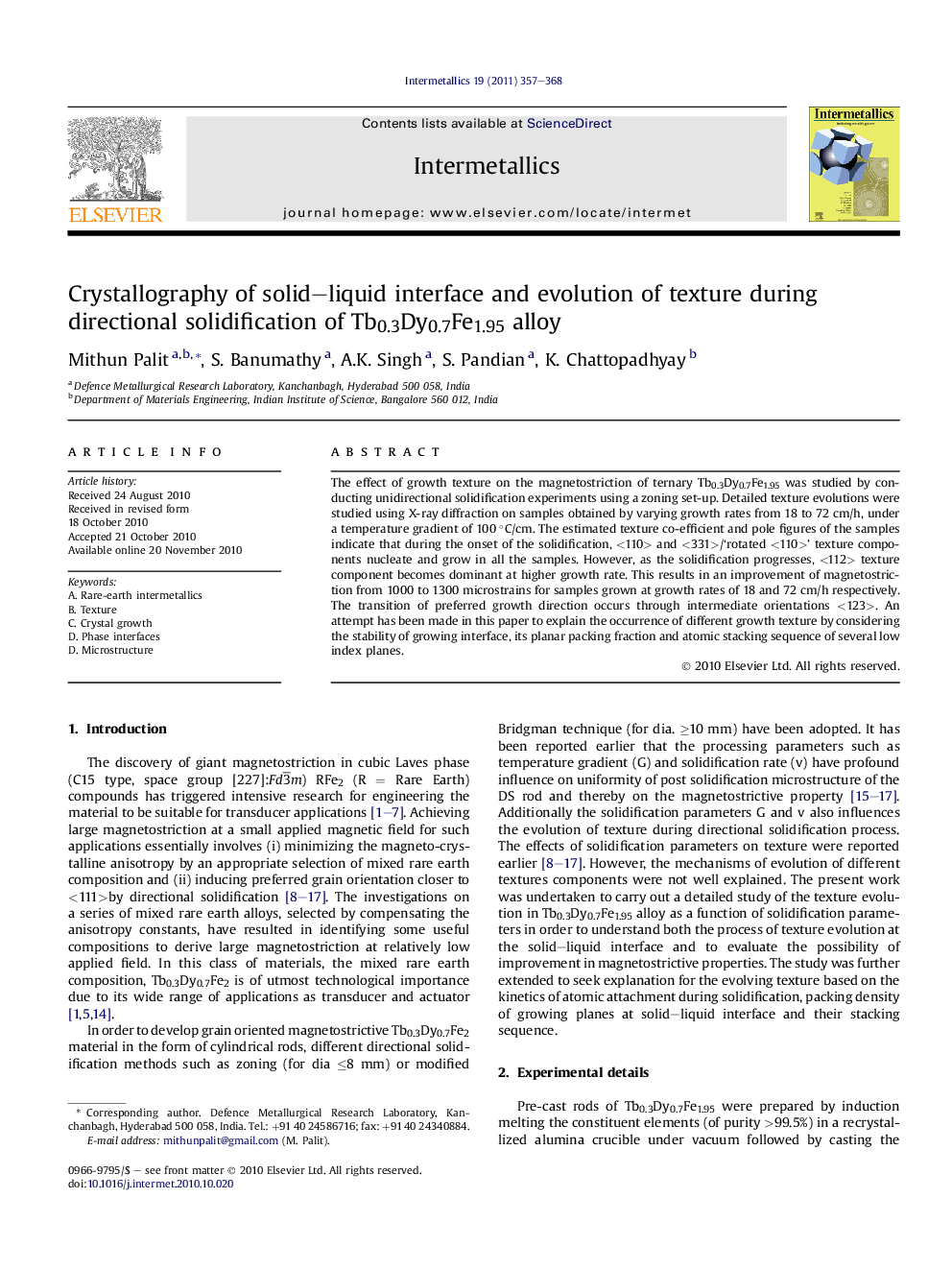| Article ID | Journal | Published Year | Pages | File Type |
|---|---|---|---|---|
| 1600954 | Intermetallics | 2011 | 12 Pages |
The effect of growth texture on the magnetostriction of ternary Tb0.3Dy0.7Fe1.95 was studied by conducting unidirectional solidification experiments using a zoning set-up. Detailed texture evolutions were studied using X-ray diffraction on samples obtained by varying growth rates from 18 to 72 cm/h, under a temperature gradient of 100 °C/cm. The estimated texture co-efficient and pole figures of the samples indicate that during the onset of the solidification, <110> and <331>/‘rotated <110>’ texture components nucleate and grow in all the samples. However, as the solidification progresses, <112> texture component becomes dominant at higher growth rate. This results in an improvement of magnetostriction from 1000 to 1300 microstrains for samples grown at growth rates of 18 and 72 cm/h respectively. The transition of preferred growth direction occurs through intermediate orientations <123>. An attempt has been made in this paper to explain the occurrence of different growth texture by considering the stability of growing interface, its planar packing fraction and atomic stacking sequence of several low index planes.
Graphical abstractFigure optionsDownload full-size imageDownload as PowerPoint slideResearch highlights► The directionally solidified samples exhibit absence of pro-peritectic (Tb,Dy)Fe3phase, which is favorable for realizing large magnetostriction value. ► At the onset of solidification, <110> or ‘rotated <110>’ is the texture component that nucleates irrespective of rate of solidification. However, when the rate of solidification is increased from 18 cm/h to 72 cm/h, the <112> or ‘rotated <112>’components evolve stronger. ► Orientation selection is related to the configuration of growth interface constituted by low index planes. The increase of growth rate favors an interfacial configuration where one of the constituent low index planes is (010), which is not having separate Fe-layer in its stacking sequence and thereby aiding faster atomic attachment to the solid–liquid interface. ► The change of preferred orientation from <110> to <112> occurs through an intermediate orientation <123> lying on the {111} plane. ► The magnetostriction as well as static strain co-efficient increase with solidification rate as a result of evolution of <112> type texture components.
